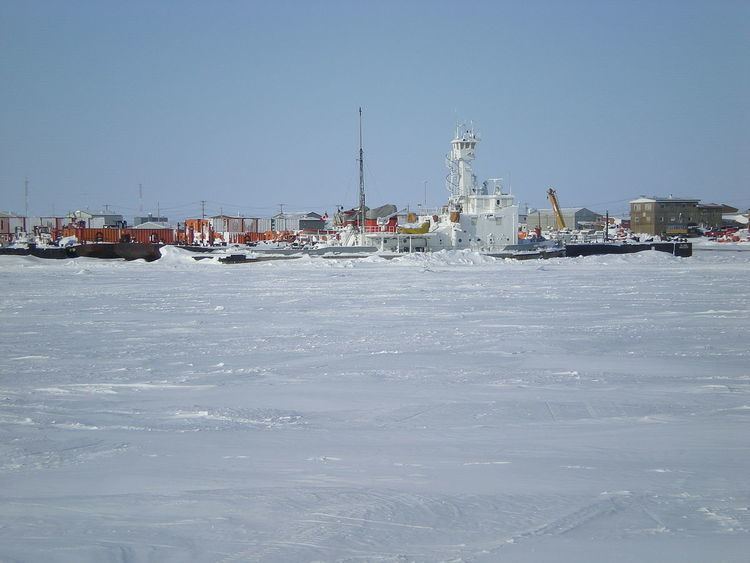Founded 1931 | Parent organization NorTerra Inc. | |
 | ||
Northern Transportation Company Limited (NTCL) is a marine transportation company in the Canadian and American Arctic owned by Norterra, a holding company that is owned by the Inuvialuit of the Northwest Territories. While primarily a marine freight hauler on Canadian rivers, like the Mackenzie and the Hay and along the Arctic coast of Canada, they are also a petroleum wholesaler. Its head office is now in the town of Hay River, Northwest Territories. Today, it primarily utilizes tugs and barges.
Contents
The Board of Directors was dissolved, in May 2016, and the company faces an imminent collapse. Many of NTCL's creditors await further developments, on this subject.
History
The company was an outgrowth of the competition in the Yukon between the new Northern Trading Company and the entrenched Hudson's Bay Company. Colonel J.K. Cornwell, one of the principals of the Northern Trading Company, ran his first steamer, The Midnight Sun, on the Lesser Slave Lake River in 1904. The company acted as a kind of subsidiary of the Northern Trading Company until its formal creation in 1930 as Northern Waterways Limited, but its name was changed in 1934 to the Northern Transportation Company Limited. It was one of the first haulers on the Mackenzie River after the Hudson's Bay Company, starting up just after the Yukon gold rush. In 1936, it was taken over by the Eldorado Gold Mines Limited and Arthur Berry was appointed manager in Edmonton. In 1944, it became a Crown corporation when its parent, then known as Eldorado Mining and Refining, was nationalized by the government of Canada.
The company has been involved in North Slope operations since 1963. In 1975, then under the jurisdiction of the Coast Guard Northern Division of Transport Canada, it became the sole marine shipper in the Canadian Arctic operating of out of Churchill, Manitoba. In 1959, it moved its operational headquarters to the town of Hay River. In 1985 it was purchased by the Inuvialuit Development Corporation and Nunasi Corporation, two native-owned corporations.
On April, 1 2014 the Inuvialuit Development Corporation (IDC) bought the 50% share of NorTerra held by Nunasi. This purchase of NorTerra gives the IDC complete control of Canadian North, Northern Transportation Company and other companies that were jointly held.
The "Radium Line"
In 1937 the Northern Transportation Company started to introduce new diesel powered steel tugboats to tow barges on the Mackenzie River. The first two vessels were the Radium Queen and Radium King. Other vessels in this fleet included the Radium Express, Radium Yellowknife, Radium Prince, Radium Cruiser, Radium Scout, Radium Charles, Radium Gilbert and Radium Lad, earning the fleet the name "The Radium Line". Port Radium on Great Bear Lake, a mine that supplied much of the uranium used by the Manhattan Project, and later the company's uranium mines on Lake Athabasca in northern Saskatchewan, were key destinations for the fleet.
The tugs were constructed in eastern shipyards, then disassembled, so the parts could be shipped by rail to Waterways, Alberta, a river port on the Clearwater River, which was then the northern terminus of the North American railway grid. The Radium Queen was reassembled there. From Waterways tugs could only navigate the Clearwater, Lake Athabasca, and some of its tributaries. The Slave River, that drained Lake Athabasca to Great Slave Lake, had a 16 mi (26 km) stretch of rapids that had to be portaged around, at Fort Smith, Northwest Territories. The Radium Queen towed the parts of the Radium King to Fort Smith, where they were portaged, and reassembled on the lower river. Most of the fleet were reassembled on the lower Slave River.
Ice on the Mackenzie River, and her tributaries, impeded navigation until early June. Freeze-up occurs in mid October, providing only a few months of navigation.
All of the tugs had extremely shallow draft, and mounted their propellers in cavities under their hull.
